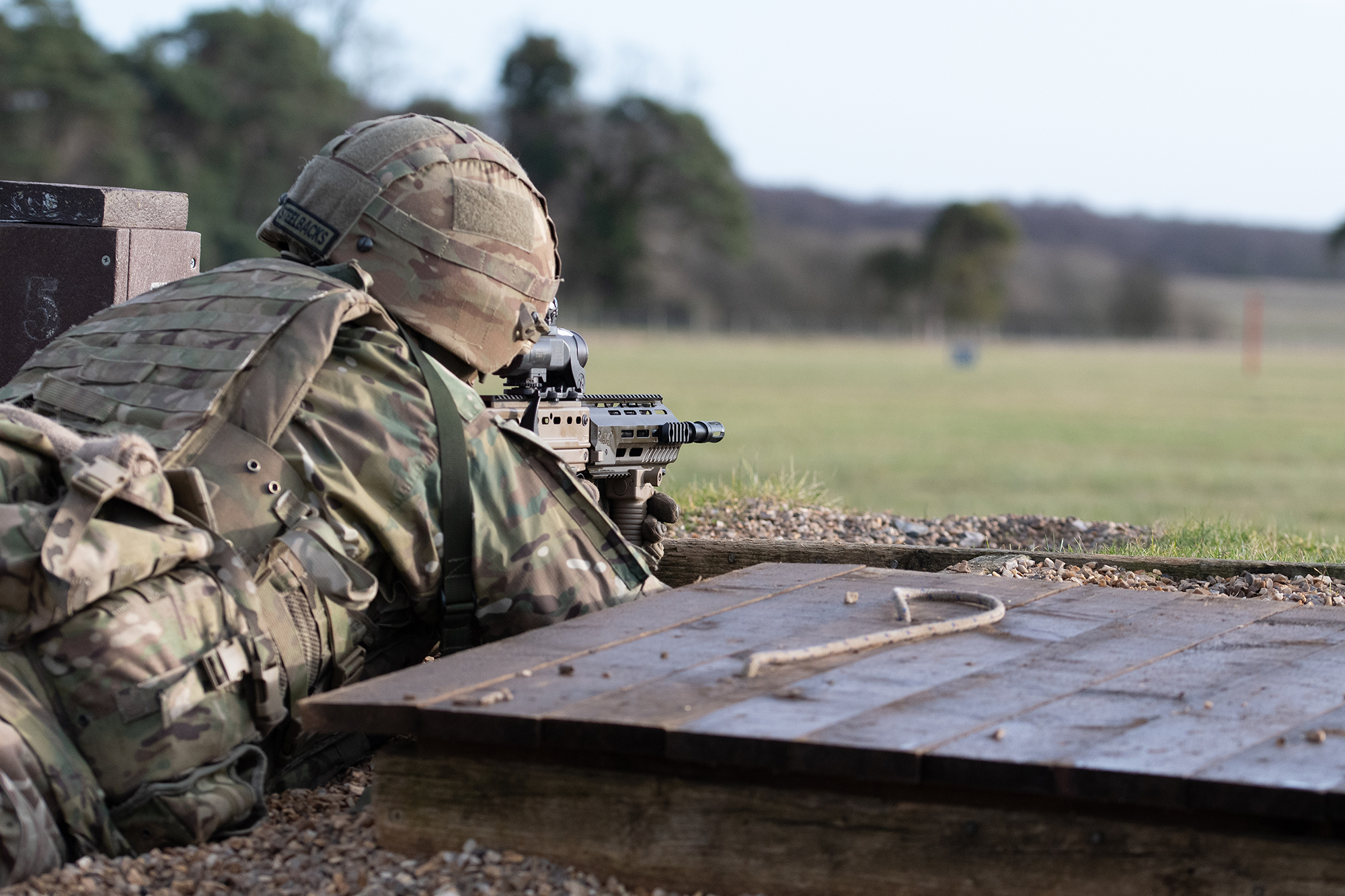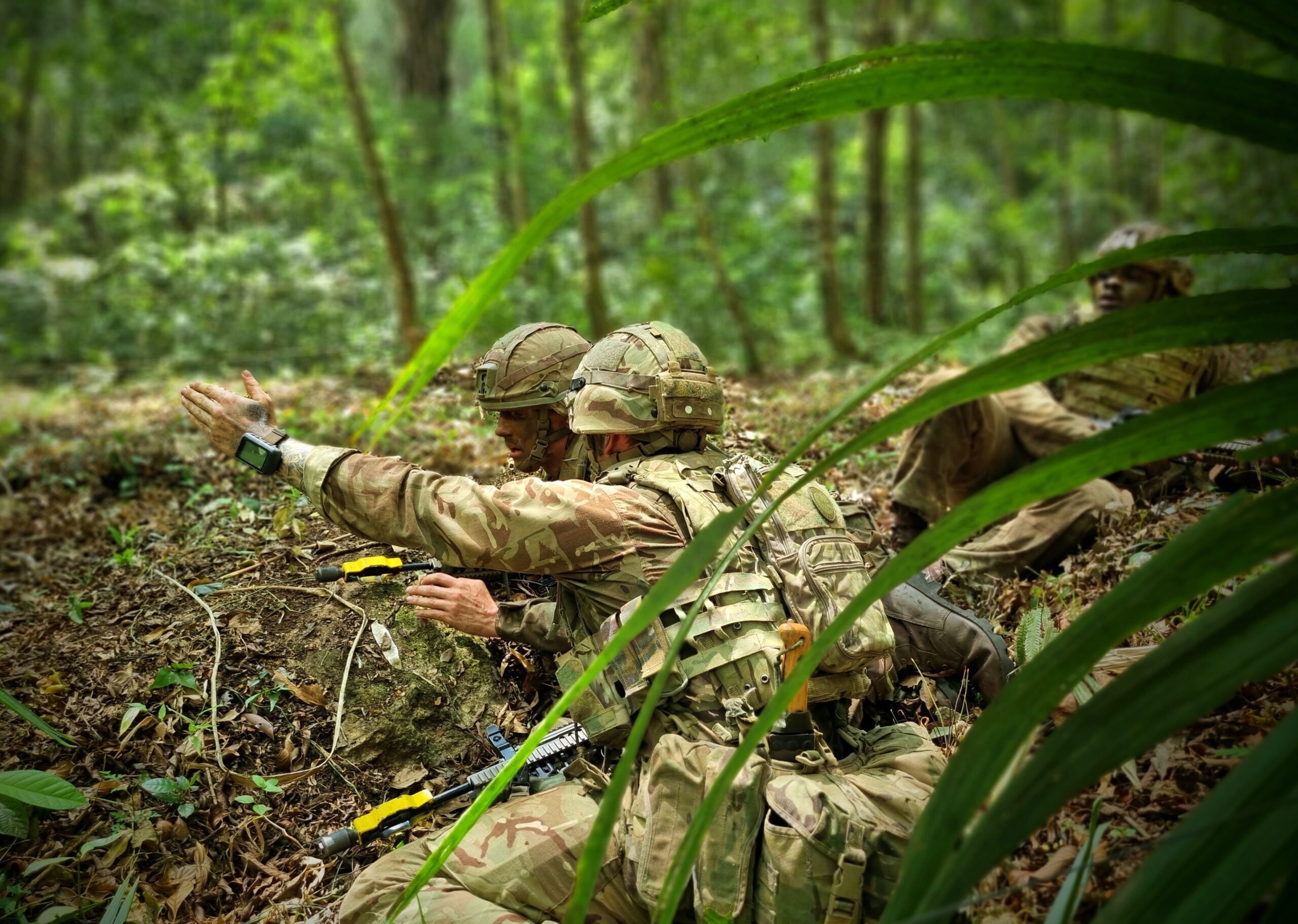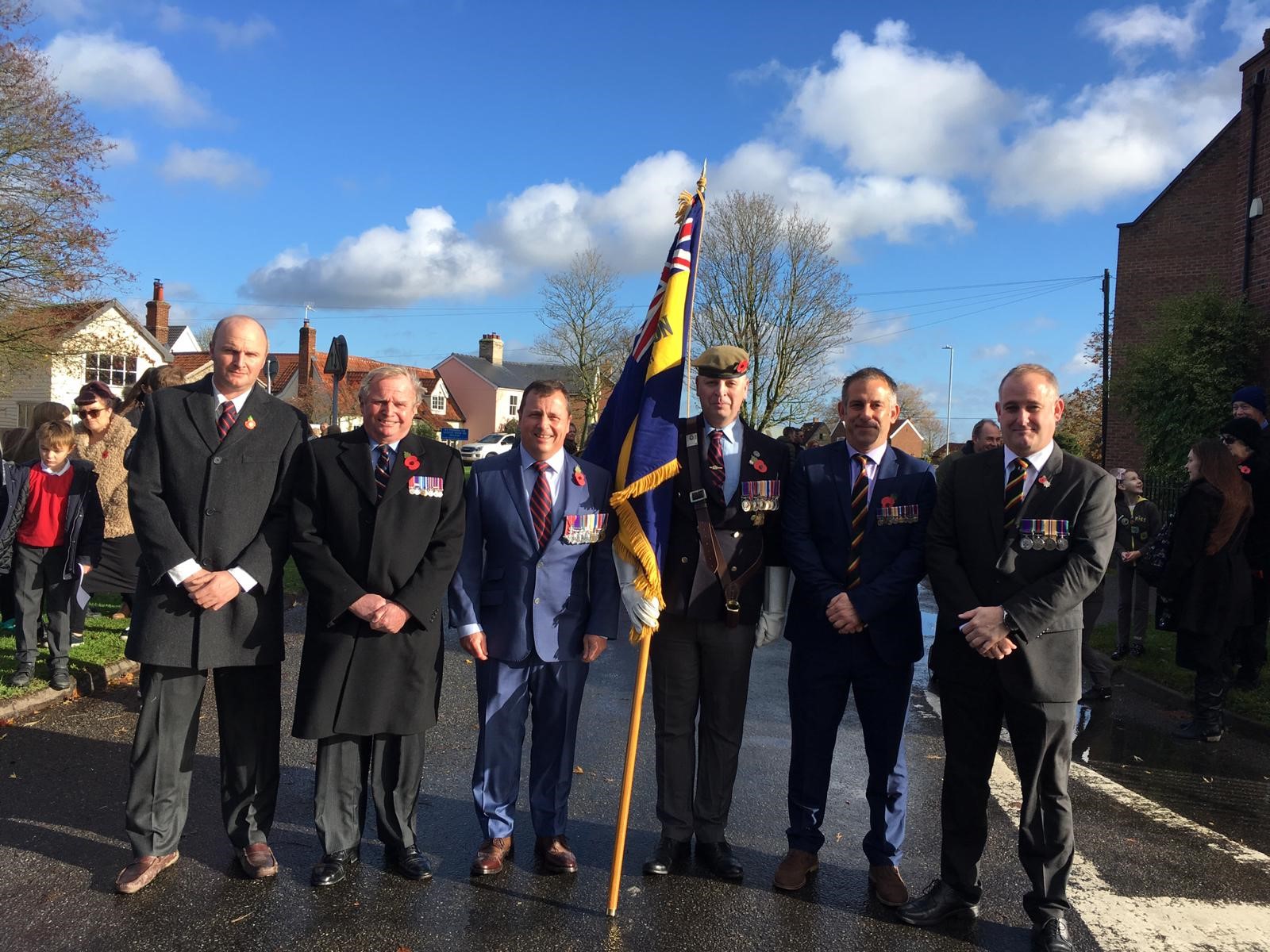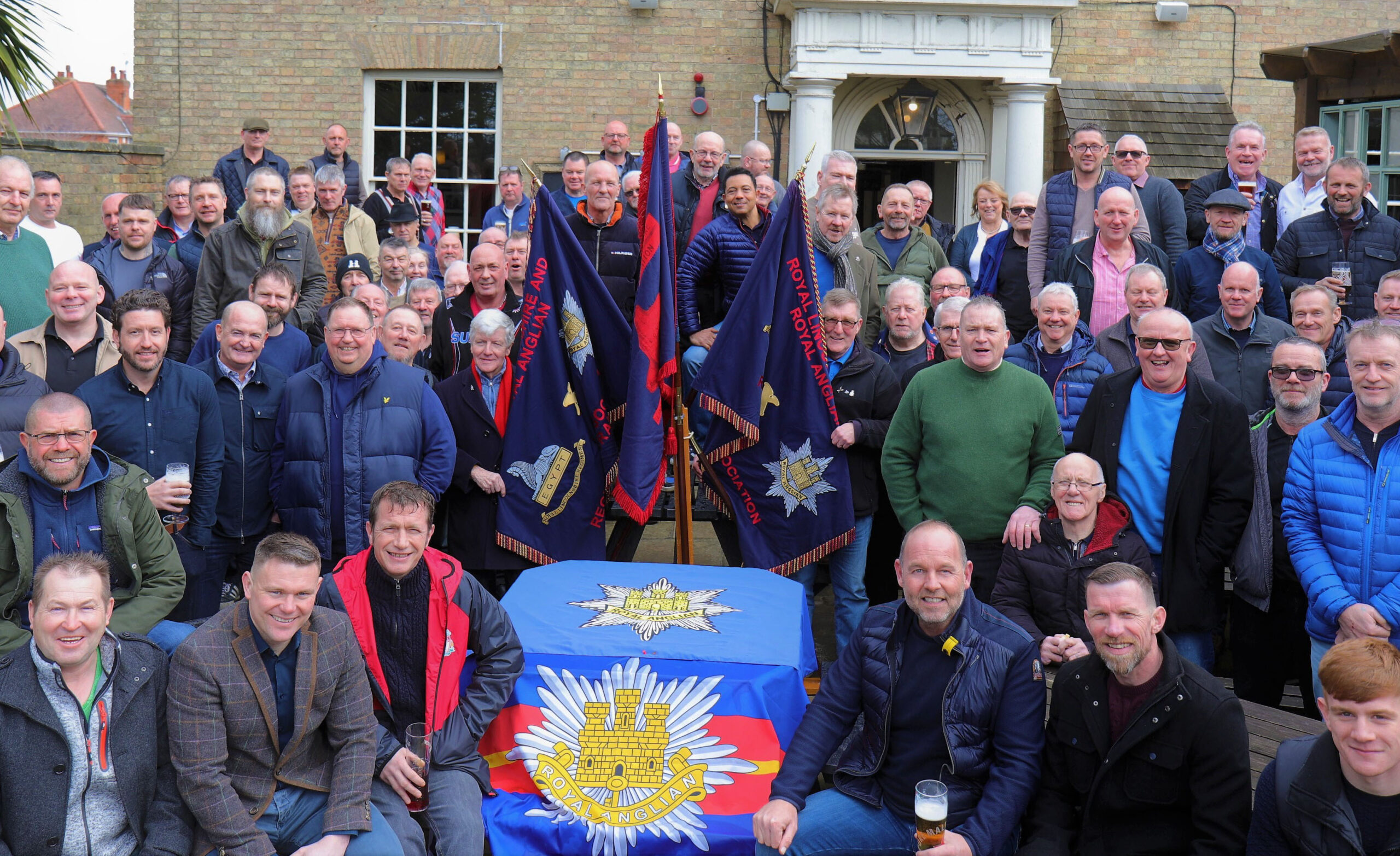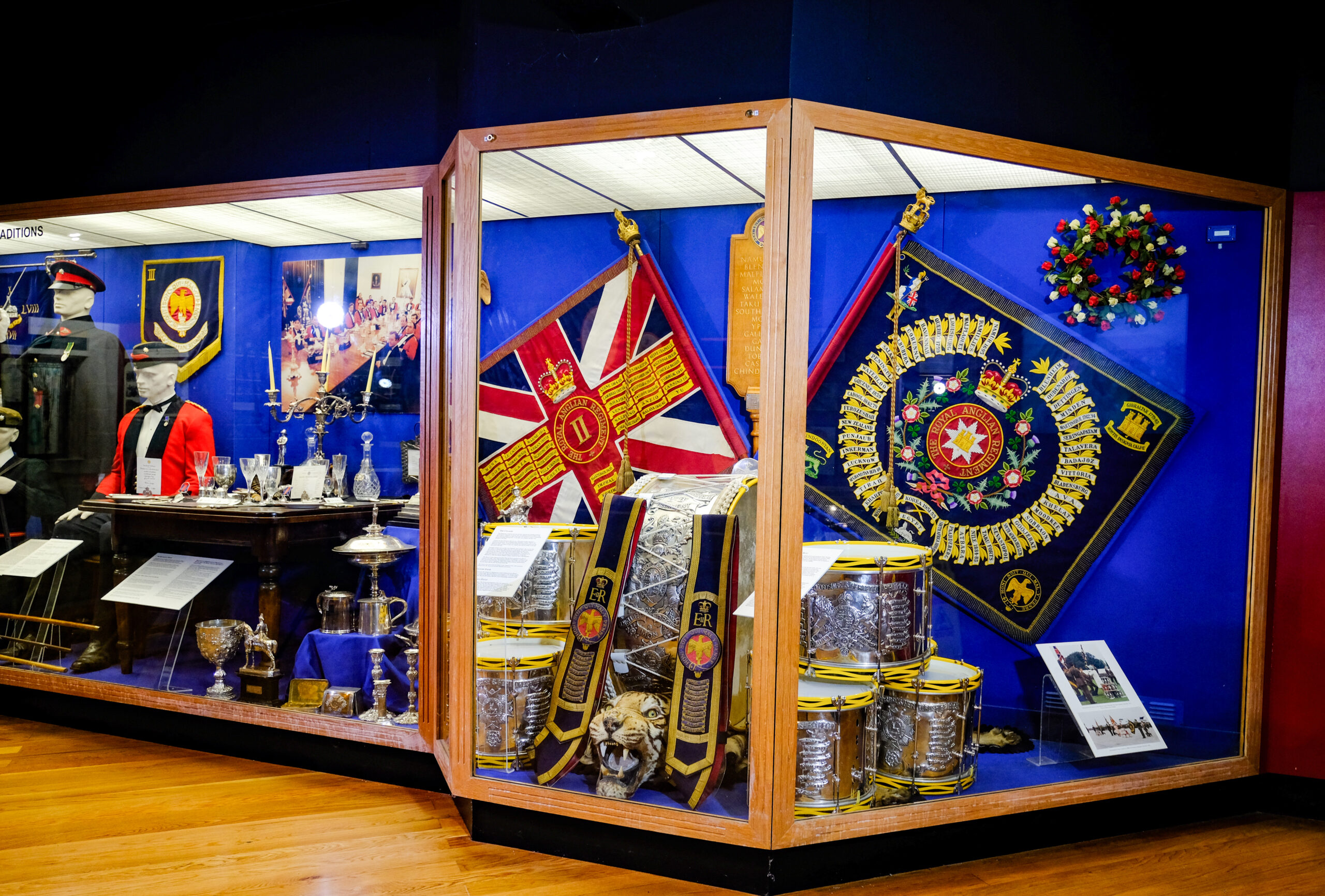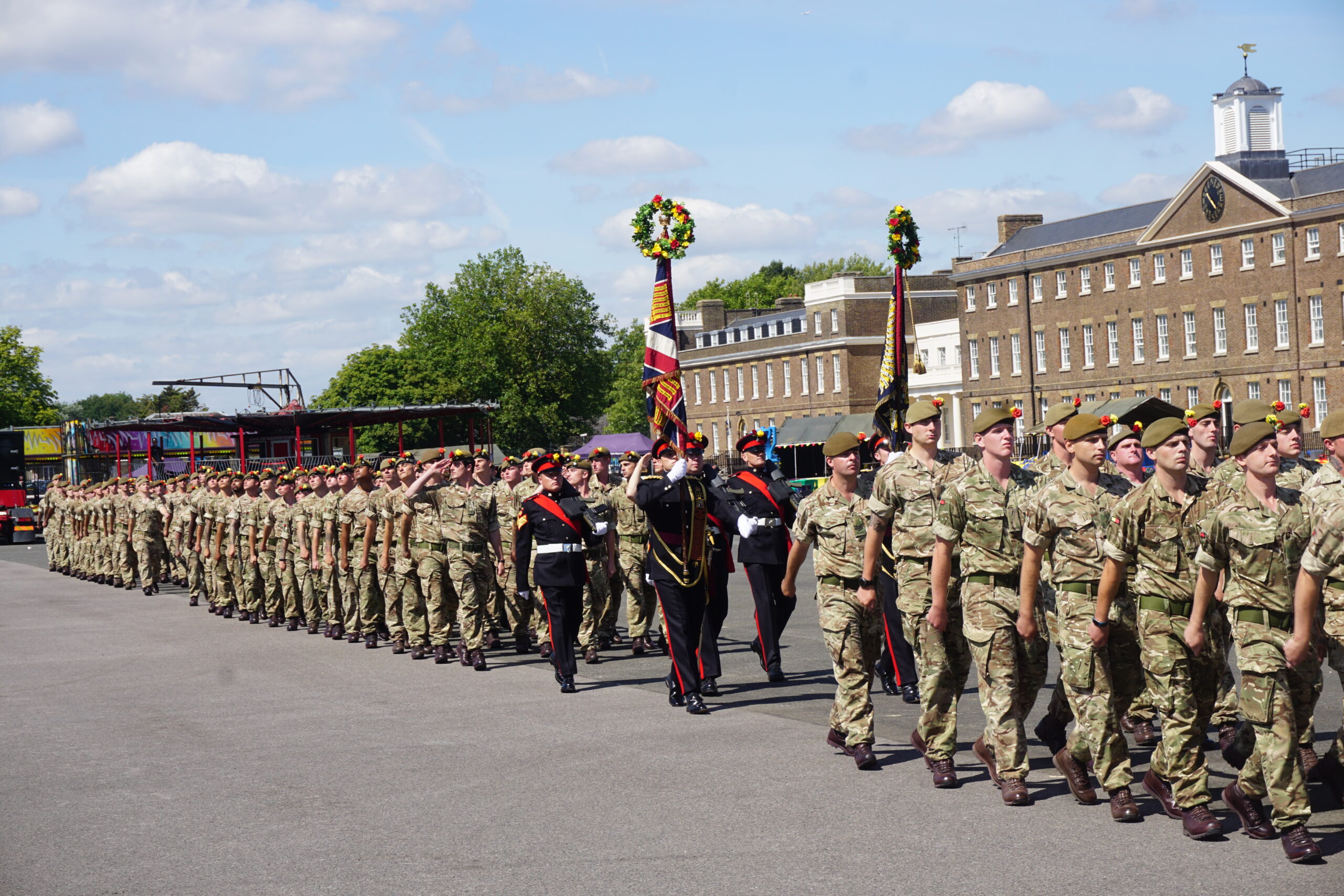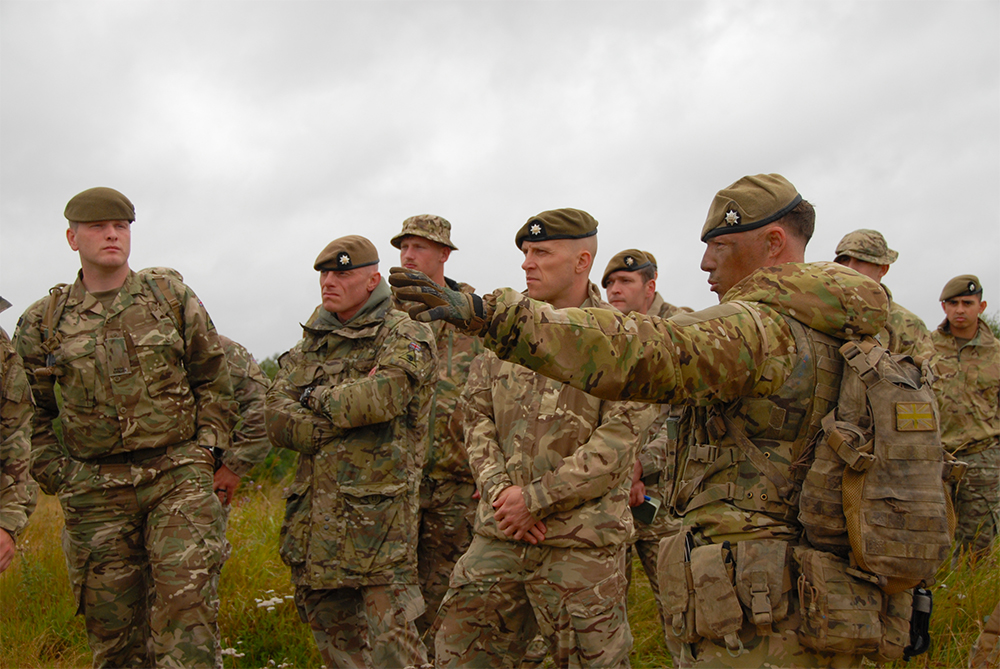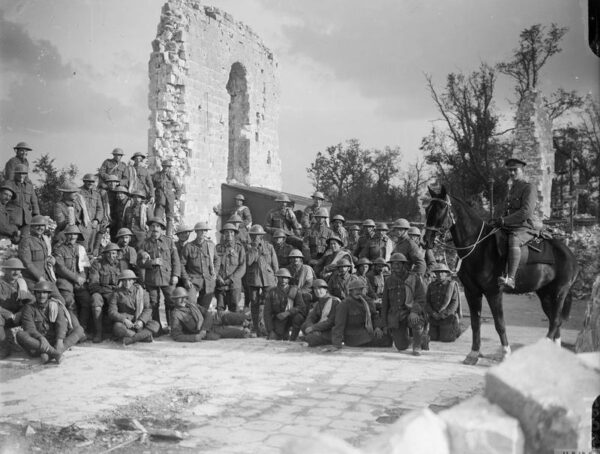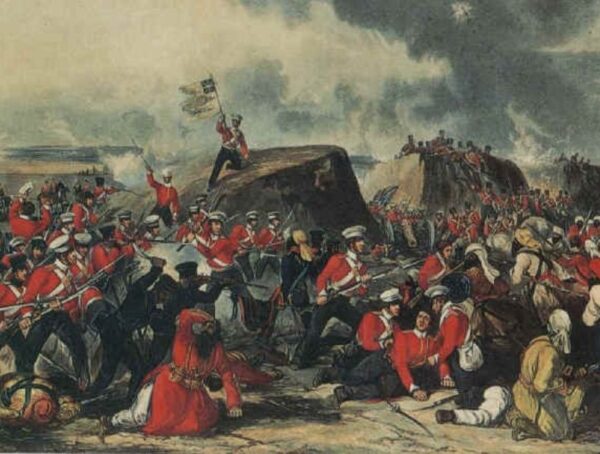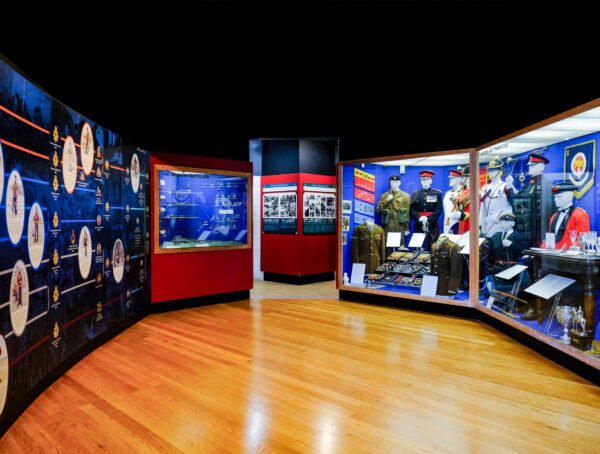Out Battle Honours
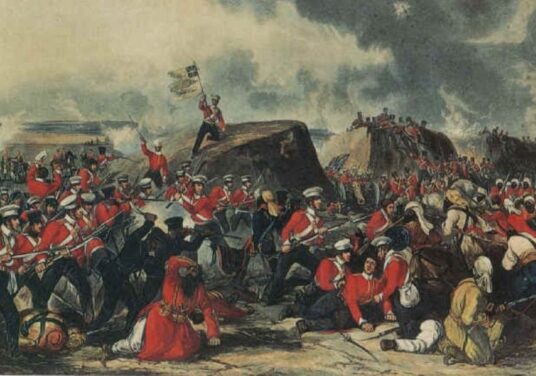
Sobraon Day - 10th of February 1846
Undercover of darkness and dense fog the Tenth moved in utter silence towards the enemy position. As they advanced to within the range of muskets and artillery the enemy opened fire, the effect was devastating, men fell at every step, yet the advance continued in perfect line, as though on the parade square, still in silence with mot a shot being fired. The Tenth was now reduced to half its original strength. When only a short distance from the Sikh guns the Colonel of the Tenth ordered them to halt for breath, this they did, still in perfect silence, still not a shot fired by them.
Hookum Singh was a Sikh Captain of Artillery that morning and recalled, ‘Then with a shout, such as only angry demons could send forth and which is still ringing in my ears, they made a rush for our guns led by their Colonel. In ten minutes, it was all over, they leapt into the deep ditch or moat to our front, soon filling it, then swarming up the other side on the shoulders of their comrades they dashed for the guns, which were still defended by a strong body of our infantry who fought bravely. But who could withstand such fierce demons with those awful bayonets, which, they preferred to their guns – for not a shot did they fire the whole time – and then with a ringing cheer which was heard for miles around, they announced their victory.’
For their actions at Sobraon the regiment received the thanks of Parliament and the right to wear on the colours and appointments the Battle Honour SOBRAON. The Second Battalion mark and commemorate Sobraon Day.
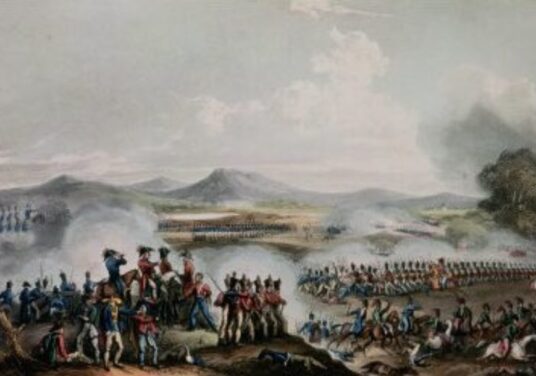
Talavera Day - 27th July 1809
Talavera was a battle of the Peninsular War. Wellington had advanced into Spain with the intention of bringing to battle a large French army. On 27 July 1809 his forces occupied high ground at Talavera; southwest of Madrid, alongside a large Spanish force. Late in the evening, the French attacked, before the left of the British line was properly in position, and occupied an important hill.
A swift counterattack, in which the 1st Battalion of the 48th (Northamptonshire) Regiment of Foot played a prominent part, drove the French off the hill, and other troops, including the 2nd Battalion of the 48th, came up to help secure the position.
A large-scale French assault the following morning was repulsed, but later in the day when the French attacked the centre of the British line a dangerous gap was opened up. Wellington summoned the 1/48th to plug the gap, which they did with great dash and bravery.
In his subsequent dispatch, Wellington wrote, ‘The battle was certainly saved by the advance, position, and steady conduct of the 48th Regiment.’ As a result of their conduct on 28th July, the 48th were granted the signal privilege of being the only regiment in the Army permitted to include the word “Talavera” on their buttons and accoutrements.
The ‘Heroes of Talavera’. 1/48th stood firm as men rushed through their intervals, then closing, prepared to meet the enemy mass which loomed out of the haze straight at them with bayonets fixed. It is during one of these actions, Lt Col Donellan was mortally wounded, his dying words to the Battalion Second in Command were “Maj Middlemore, you have the honour of leading the 48th in the charge!”
For their actions that day, The 48th were awarded the single privilege of being the only regiment permitted to include the word Talavera on their badge, buttons and accoutrements.
The Poachers remember their forebears, The 48th of Foot, in The Northamptonshire Regiment as they marched on, to commemorate the Battle of Talavera.
Talavera Day was celebrated within the Northamptonshire Regiment and the 2nd East Anglian Regiment, and is today the main Regimental day of the 2nd Battalion.
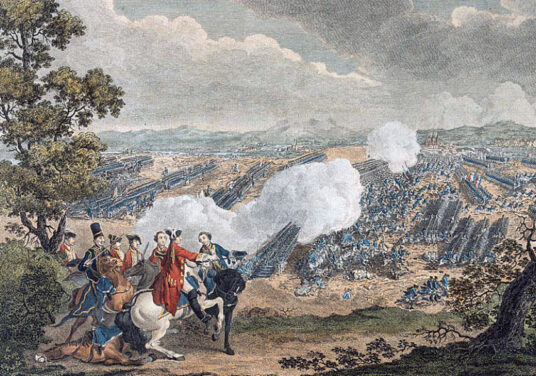
Minden Day - 1st of August 1759
The Seven Years’ war began in 1754 (although hostilities in Europe did not commence until 1756) and lasted until 1763. It was a result of tensions overseas between Britain and France, as each sought to extend their influence worldwide, and concerns regarding British interests in Hanover (the British Royal Family were at the time also rulers of Hanover). Prussia allied herself with Great Britain, Austria with France.
France invaded Hanover in 1757 and made significant advances. Prince Ferdinand of Brunswick initially had some success in driving the French back, but by July 1759 they had advanced again to a very strong defensive position around Minden (north-western Germany). Ferdinand, his Hanoverians reinforced by a large British contingent, deceived the French as to his intentions and they moved forward in the early hours of 1 August, only to find themselves exposed to the entire allied army. Although it was the result of an incorrect order, six battalions of British infantry and two Hanoverian battalions advanced against the entire French cavalry, and by their steadfastness, discipline and marksmanship survived six charges, then the onslaught of an infantry force, wreaking such havoc that the enemy fled in panic and confusion. Counter-attacks were given the same treatment, and by the end of the day the French were in full retreat. The allied force had achieved a great victory.
As the British battalions passed through gardens on the morning of the battle, the soldiers picked a rose and wore them in their caps. The senior of those battalions, in the forefront of the action, was the 12th Regiment of Foot, later to become the Suffolk Regiment. The 12th was awarded the battle honour ‘Minden’, as were other British battalions. The custom grew up of wearing red and yellow roses in the headdress on Minden Day each year, and of placing rose wreaths on the Colours and drums if they are on parade.
Minden Day was always strongly commemorated by the Suffolk Regiment, and this tradition was handed down to the 1st East Anglian Regiment then to the 1st Battalion of the Royal Anglian Regiment who today ensure that, wherever they are, it is a day of great celebration. In addition, there is an annual Minden Day Reunion at Regimental Headquarters, Bury St Edmunds.
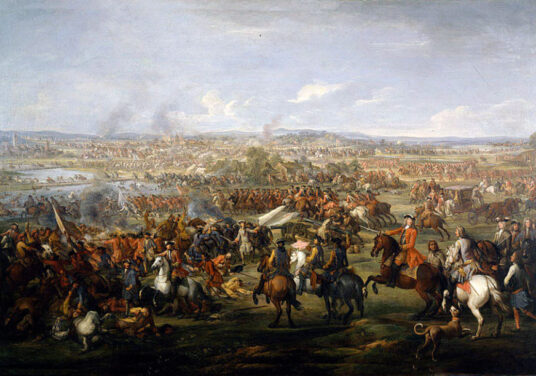
Blenheim Day - 13th August 1704
Blenheim was a battle of the War of Spanish Succession. In 1702 the Duke of Marlborough was appointed to command a combined English, Dutch and Prussian force, which campaigned with some success against the French in the low countries (Belgium and the Netherlands). By 1704 Vienna was threatened, so Marlborough took his English and Prussian troops down the valley of the Danube to Munich; deciding that it was too strongly defended to capture, he pulled back and sought to engage a strong French force in a well-defended position around the village of Blenheim.
Early in the morning of 13th August, Marlborough began manoeuvring for his assault, taking the French by surprise, first attacking the flanks, the village itself being on the British left, he was able to get the French to send reinforcements, thus weakening their centre. He then launched his main assault, and after a long and very hard battle achieved a breakthrough, subsequently rolling up the flanks in turn. The French were completely routed, losing 30,000 troops. It was a very significant victory, and many historians consider that it was pivotal to the subsequent victory in Europe.
Stanley’s Regiment, afterwards the 16th (Bedfordshire) Regiment of Foot, played a significant part in the assaults on the left flank, and was subsequently granted the battle honour of ‘Blenheim’. In the adjacent brigade on the left flank was North’s Regiment, later to become the 10th (North Lincolnshire) Regiment of Foot, and it too received the battle honour.
Blenheim Day subsequently became the main regimental day of the Bedfordshire Regiment, and is still marked by the 2nd Battalion.
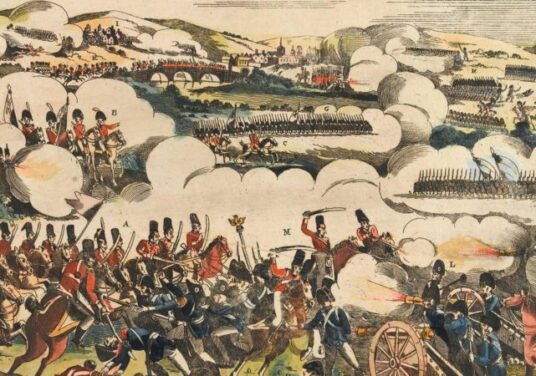
Salamanca Day 22 July 1812
Following the French Revolution in 1789, Great Britain was at war with France for most of the period 1793-1815 as Napoleon Bonaparte, seizing power in 1799, attempted to dominate the whole of Europe. Much of the action was at sea, but the Peninsular War, from 1808 to 1814, was the setting for the Army’s major contribution to Napoleon’s eventual defeat. For most of the time the British forces in the Peninsula were under the command of General Sir Arthur Wellesley, later to become the Duke of Wellington, and fought alongside Portuguese and Spanish allies.
On 22 July 1812 at Salamanca, northwest of Madrid, Wellington’s army, from a strong and well-concealed defensive position, was able to launch a surprise attack on the flanks of the French forces. After repeated assaults, the whole French army was driven back in confusion, and the way was open for Wellington to advance to Madrid.
The 2nd Battalion of the 44th (East Essex) Regiment of Foot, which had been raised in 1803, played a significant part in the battle, and Lieutenant William Pearce captured the Eagle Standard of the French 62nd Regiment of the Line. The 1st Battalion of the 9th (East Norfolk) Regiment of Foot, the 1st Battalion of the 48th (Northamptonshire) Regiment of Foot, and the 2nd Battalion of the 58th (Rutlandshire) Regiment of Foot were also involved in the action and, like the 2/44th, were granted the battle honour ‘Salamanca’.
Subsequently the 44th Foot, as the 1st Battalion of the Essex Regiment, adopted an eagle as their badge. The tradition was continued during further reorganisations so that today the Regimental Colour includes an eagle and all ranks of the Regiment wear an eagle badge on the upper left arm in formal dress.
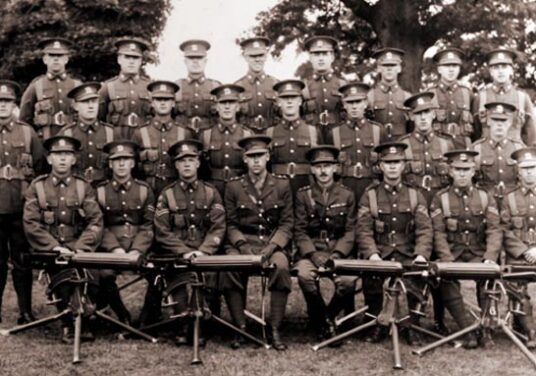
Royal Tigers' Day 25 June (1825)
The Regimental day of the Royal Leicestershire Regiment was, unusually, not connected with a battle but with the grant of an honorary distinction on 25 June 1825 when His Majesty King George IV was pleased to approve the 17th (Leicestershire) Regiment of Foot ‘bearing on its Colours and appointments the figure of the ‘Royal Tiger’, with the word ‘Hindoostan’ superscribed, as a lasting testimony of the exemplary conduct of the corps during the period of its service in India, from the year 1804 to 1823.
This long period had involved a great deal of active service as British rule in India was consolidated and various lawless factions brought under control, and the Regiment had been given much praise for its efficiency and discipline.
The grant of this distinction is commemorated today by its presence on the Regimental Colour and on the buttons worn by all ranks of the Regiment in formal dress.
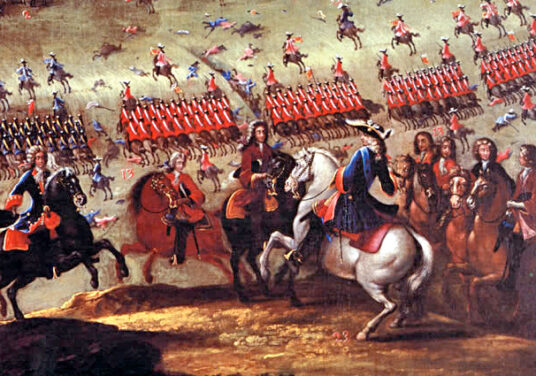
Almanza Day 25 April 1707
The War of the Spanish Succession, which lasted from 1701 to 1714, was brought about by disagreement between the European nations over who should succeed King Charles II of Spain who had died in 1700 with no clear heir. Had the French candidate been accepted, the thrones, and empires, of France and Spain would have been united and tilted the balance of power in Europe and abroad. To prevent this England formed an alliance with the Dutch Republic, Portugal, and others to promote the rival Austrian candidate.
In 1707 an allied force under the Earl of Galway was in south east Spain aiming to march on Madrid. It encountered a far superior French and Spanish force at Almanza, which Galway decided to attack on the morning of 25 April. At first things went well as the assault developed on the allied left and in the centre. Portuguese troops on the right, however, failed to follow up, and were subsequently driven off by the French cavalry. This left the flank of the advance exposed and the bulk of the allied force was soon overrun. It was only by some gallant rearguard action that part of the force, hardly more than a quarter of those originally committed to the battle, was able to withdraw.
Steuart’s Regiment of Foot, later to become the 9th (East Norfolk) Regiment of Foot, performed with conspicuous gallantry in this rearguard action and took heavy casualties. As Almanza was a significant defeat, no battle honour was awarded. However, it is believed that as a result of its conduct there Queen Anne granted the Regiment the right to wear the badge of Britannia. The badge was certainly in use by the Regiment later in the 18th Century, although the first official record that can be traced is a letter of 30 July 1799 ‘confirming’ the Regiment’s right to it, and it is on the Regimental Colour to this day. Blood’s Regiment of Foot, later to become the 17th (Leicestershire) Regiment of Foot, also took part in the battle of Almanza, almost the entire regiment being killed or
captured.
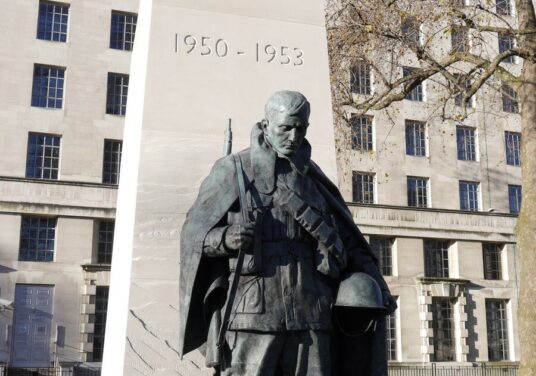
Korean War - 25 June 1950 - 27 July 1953
In 1951 two of our forebear Regiments, The 1st Battalion The Royal Norfolk Regiment and The 1st Battalion The Royal Leicestershire Regiment went to a war which was unlike any war in history – a war fought for freedom against Communism by a bewildering miscellany of nationalities: Americans, British, Australians, Canadians, Frenchman, Belgians, Turks, Greeks, Filipinos, Thailanders, Puerto Ricans, Ethiopians, New Zealanders, South Africans, Indians.
The Battalions bore little resemblance to the pre-war and wartime model: many officers and senior N.C.Os were no strangers to war, and there was a sprinkling of young regulars who had enlisted since 1945. But the large majority – something over 60 percent – were Royal Norfolks and Royal Leicestershires of an entirely new type… they were old enough to kill or be killed, but too young to vote… the National Servicemen; they went out to Korea as boys, and those that returned came back as men.
For the men of the Battalions, there were all the less glamorous chores of modern warfare – endless digging and wiring, for in close proximity to a determined enemy work on defensive positions was never finished… there was always sporadic shelling and mortaring; the World War Two Norfolks and Leicestershires dismissed this contemptuously as being nothing worse than of nuisance value, but the shells took a steady toll of casualties.
Casualties were not light. Many members of our forbear Regiments were decorated for their gallantry. Korea 1951-1952 was the last Battle Honour awarded to the Royal Norfolk Regiment and the Royal Leicestershire Regiment, and is carried today on our Regimental Colours.” – The Royal Norfolk Regiment by Tom Carew 1967.
Among the many Regiments that served in the Korean War, the common piece of silver (pictured above) in their regimental collections is unusual. Instead of being a figure of one of their own soldiers, it is of an elderly and tired Korean civilian leaning forward under a heavy load. Our 1st Battalion has the piece from 1 Royal Norfolk and this statuette is from 1 Royal Leicesters.


